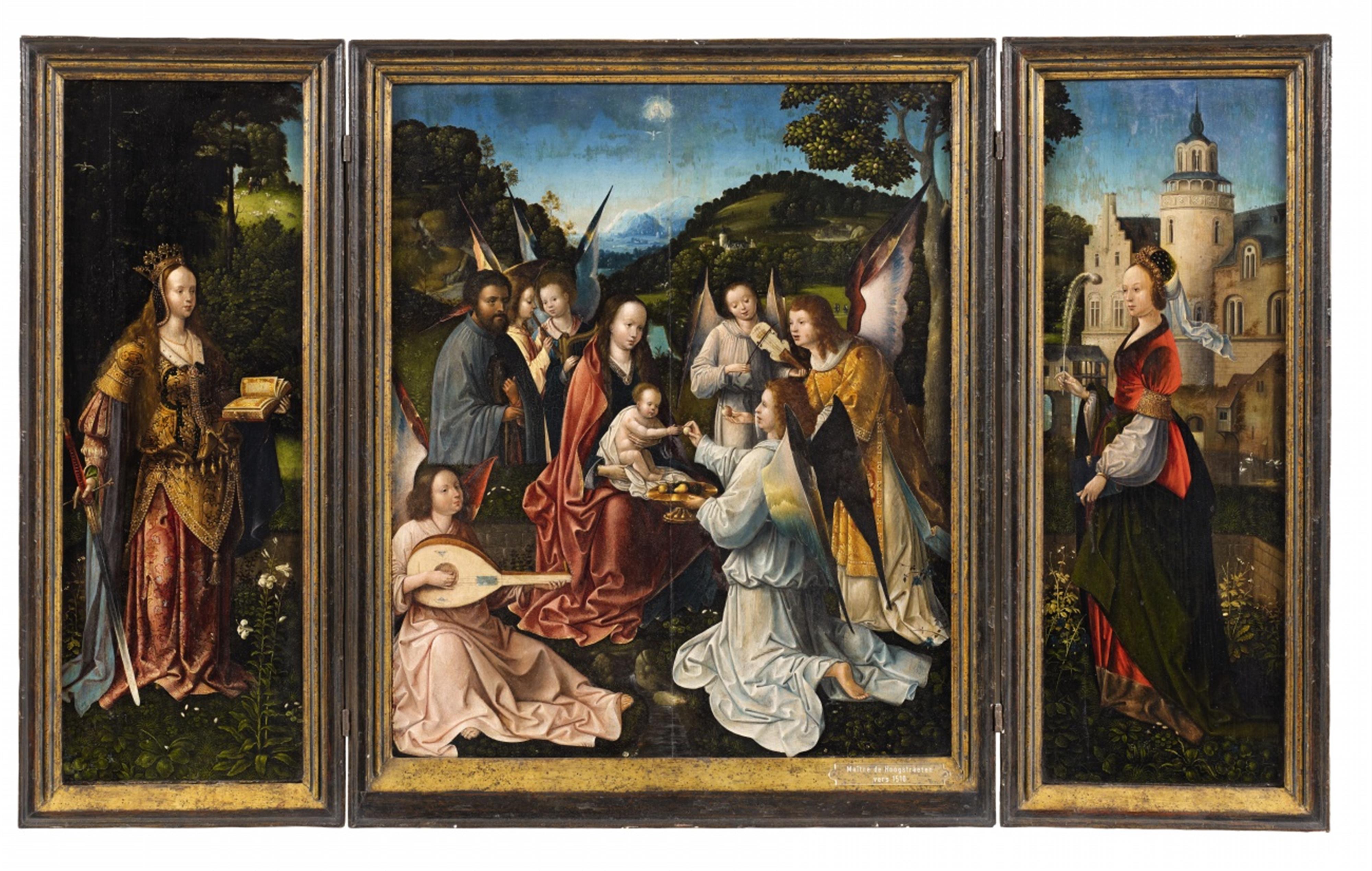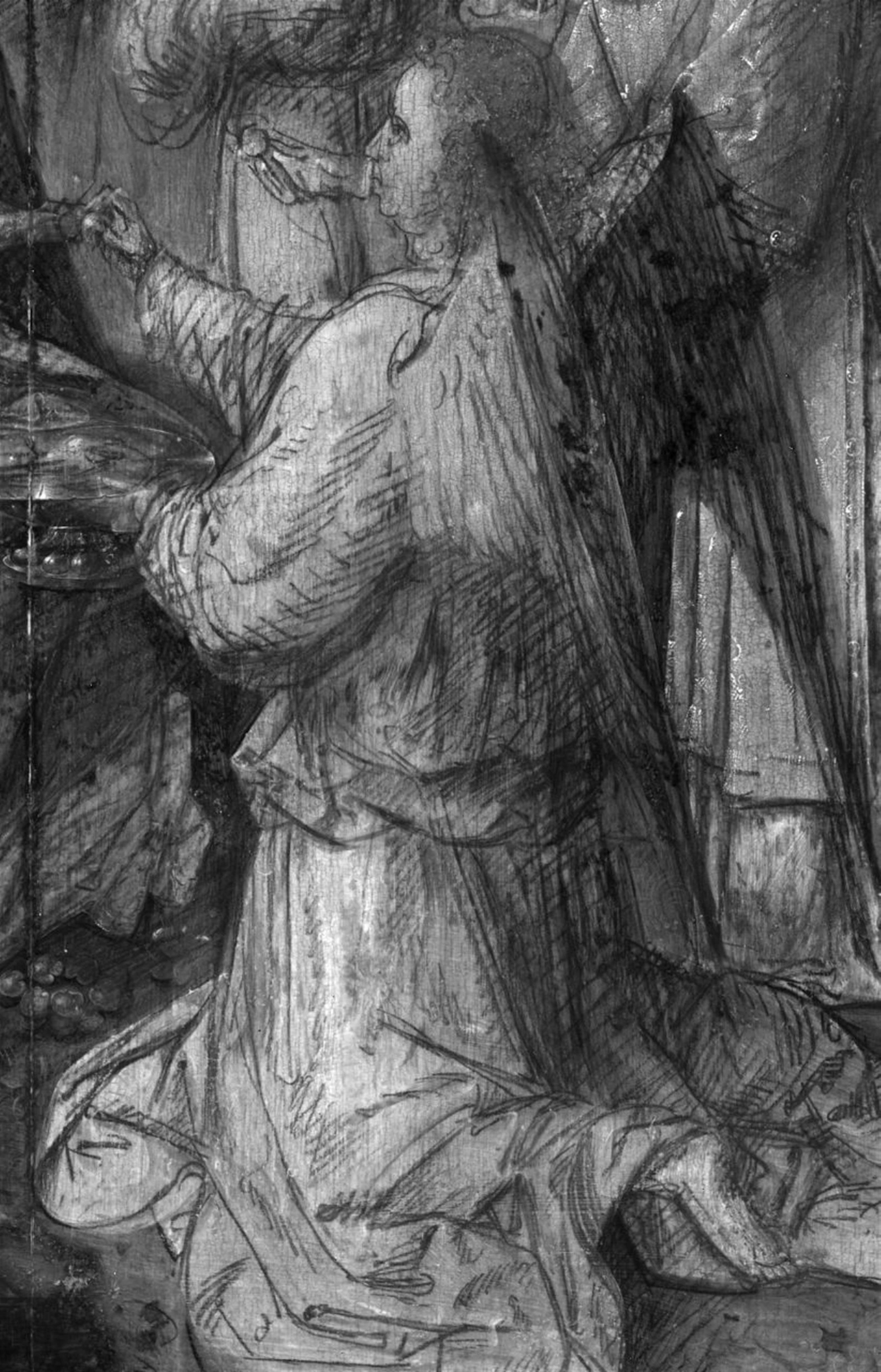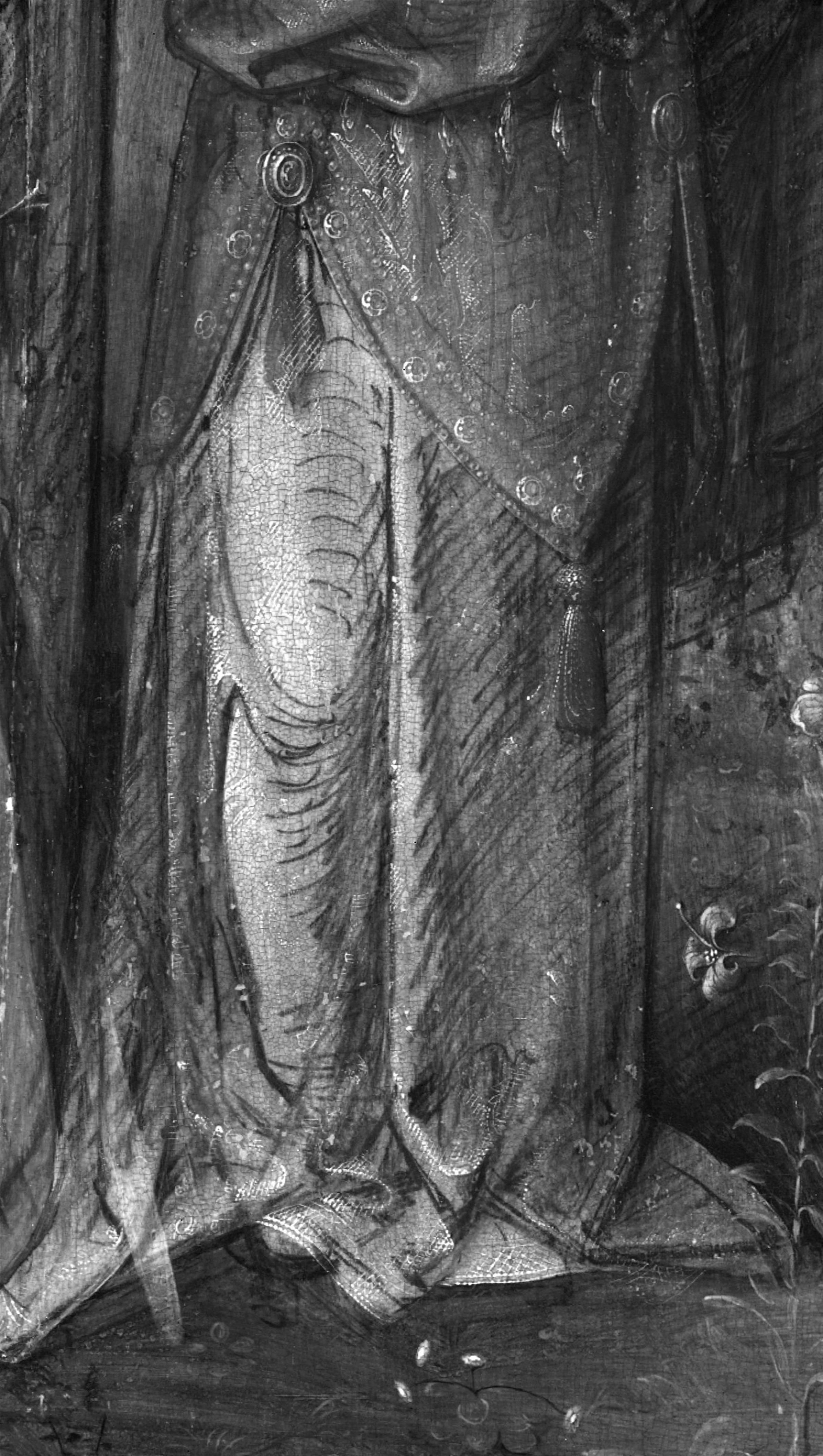Master of Hoogstraeten
The Holy Family with Angels, Saint Catherine and Saint Barbara
Oil on panel. 63 x 55.5 cm (central panel) and 63 x 22 cm (each wing).
This exquisite small triptych is by the hand of an Antwerp master active in the first quarter of the 16th century. Known since the late 19th century, it was first attributed by W. Cohen in 1909 to the Meister der Heiligen Nacht in the Dormagen collection an artist later to be identified as the mannerist painter Jan de Beer. Soon thereafter in 1914, M.J. Friedländer denied this attribution. At an unknown date he then put it in the group of works related to the Master of Hoogstraten, an attribution never more disputed. In 1964, G. Marlier published the painting under the master's name. Recently examined at the Belgian Royal Institute for Cultural Heritage, the technical documents have confirmed the high quality of execution of the panels and revealed the presence of an abundant underdrawing testifying at all levels of a highly skilled painter.
Bought by the Rhenish silk merchant Otto Wesendonck, the triptych is bequeathed at his death in 1896 to his wife Mathilde, the poet, friend and muse of Richard Wagner. A few years later at her death in 1902, the painting is deposited at the Provinzial Museum in Bonn and mentioned as part of the museum's collection in 1927. Sold at the Wesendonck-von Bissing sale at Lempertz on 27th November 1935, its track is lost until 1964 when the Brussels art dealer Robert Finck acquired it at Christie's in London. Purchased by the Belgian banker and art collector Henri Crombé, the painting never left Belgium since then.
Following a long tradition among the Flemish Primitives, the Holy Family is represented in the centre of the composition flanked on both wings by St. Catherine and St. Barbara. But what is generally less frequent and must have been much appreciated in Antwerp around 1515-1525 is the presence of six musician angels surrounding the family. In doing so the master may well have been inspired by the Holy Family Altarpiece formerly attributed to Jan Gossart (Museu Nacional de Arte Antiga, Lisbon, inv.1479) which has the same compositional scheme and the two female saints portrayed on the sides.
The Virgin sitting on a grassy bench in the centre holds the Christ Child on Her lap. With the figures of God the Father and the Holy Spirit high above them in the clear blue sky, they form the central axis of the company settled in front of a hilly landscape. In the far distance a view opens to the sea while the wooded hills extend naturally over the wings. In this space physically separated by the frame, Saints Catherine and Barbara are clearly identified by their traditional iconographic attributes, the sword and the tower. Yet more unusual is the ostrich feather in the right-hand of the latter indicating a mystic wedding present from Christ according the story related in some editions of her vita. A pair of exactly similar wings, attributed to the Master of Hoogstraten formerly in a Madrid private collection was on the Amsterdam art market in 1983 (Sotheby's Mak van Waay, 14.3.1983, lot 62) suggesting the popularity of the image. As in other works of the group like the Antwerp Adoration of the Magi (Mayer van den Bergh Museum, inv. 25) and the Savona Adoration of the Magi (Cathedral, Sta. Maria Assunta) the reversed sides are painted with reddish marbling, an element referring to Jan van Eyck's marbled frames.
Apart from some small losses and retouchings, the painting is in a fairly good condition as revealed by infrared analysis. The IRR has also shown an important and detailed underdrawing freely sketched. Probably executed in black chalk, it is characterised by the use of parallel and zigzag hatchings with contour lines indicating the modelling of the bodies and the draperies. Due to the thinning of the paint layer it is today distinctly visible to the naked eye in some places like e.g. the albs of the two angels at the front right. Small positioning changes can be observed as well in this preliminary phase, like among others the child's body which has been lowered or the wing of the standing vested angel originally drawn more to the left.
A high degree of technical skill appears equally at the paint stage. The composition is balanced and the figures are well integrated spatially. The brocade of Saint Catherine's clothing is produced with meticulous care and the folds of her garment wrinkle softly on the ground. The pomegranate ornament of the brocade appears to be identical to the one decorating the canopy of the Virgin Enthroned by the Master in Vienna (Kunsthistorisches Museum, inv. 6978). The landscape made up of successive planes stretching to the distant horizon allude to a world of complete serenity. The ficus tree in the front, uncommon in paintings of the early Netherlandish school, constitutes an exotic character while the hills, plants and flowers in the grass are typical from the north. The colours are soft and the paint applied in a smooth and thin layer with in some places addition of white lead. Gentle and varied hues which sound as some imprint of the Antwerp mannerism, appear in the albs and wings of the angels. It is likely that the well balanced composition with its fine color modulations and six musicians playing must have made up from the beginning a particular attraction for the art market.






